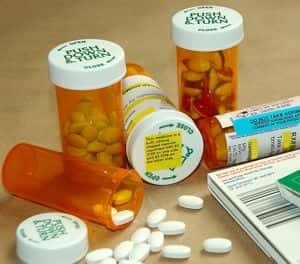
If your doctor told you he could leap tall buildings in a single bound like Superman, you would be skeptical. But if he told you that a drug or a surgical treatment would cure what ails you, you might be inclined to believe him.
Recent research shows that both patients and physicians usually overestimate the benefits of medical interventions, including prescription drugs. They also tend to underestimate the dangers. There is no independent source of information about drug pros and cons. Even the official prescribing information approved by the FDA is woefully inadequate in this regard.
An analysis of 35 studies involving more than 27,000 participants found that people usually expect far better results than the data warrant (JAMA Internal Medicine, online, Dec. 22, 2014).
Why do people have such unrealistic expectations? Direct-to-consumer advertising may be one key factor. Television commercials for medications try to put a positive spin on the benefits of drugs and downplay side effects by showing pictures of people having fun while the side effect list is read quickly in a neutral tone. This affects both patients’ and doctors’ perceptions of these advertised products.
Physicians may also play a role, however unwittingly, in patients’ expectations. According to the commentary accompanying the study, “To help patients understand benefits and harms, a physician must first understand risk herself (or himself) and must then communicate it effectively. It is not clear that physicians do either of these things well” (JAMA Internal Medicine, online, Dec. 22, 2014).
Both physicians and patients also look for information online. Hospital websites are often perceived as authoritative sources, but a recent study shows that the potential benefits of a serious cardiac intervention (transcatheter aortic valve replacement, aka TAVR) were described much more fully on most websites than the possible harms (JAMA Internal Medicine, online Jan. 12, 2015). Quantitative information on benefit was offered on 97 of the hospital sites, compared to the 12 that offered quantitative data on risk.
The authors conclude:
“Our findings suggest that web-based advertising of TAVR to the public by hospitals may understate the established risks of this procedure and provide little context for the magnitude of those risks to inform patient decision making.”
Accurate information about possible drug pros and cons is also crucial for people to make appropriate, well-informed decisions about taking medicine. Rarely are patients told the actual benefit of a medication in ways that they can easily grasp.
During the 1950s, people bought cars based on style, price and the skill of the salesman. They were rarely told anything about reliability, efficiency (miles per gallon) or safety. Now, car buyers can access detailed information about almost any model on the road and make an informed choice based on personal priorities.
It is time for health care to adopt a similarly transparent approach to tests and treatments, including drugs. Until that happens, patients will need to be far more skeptical about claims made for benefits and look harder for information about risks.
How well do you know the pros and cons of your medication? Were you told the absolute benefit and risk of your drug? In other words, if 100 people were to take the medicine you are taking for three years, how many would experience some measurable benefit such as avoiding a heart attack or stroke? If only 3 people out of 100 actually saw a benefit in a clinical trial but 30 out of 100 experienced some unpleasant side effect, that might not be a very good benefit/risk ratio. Without such solid information it is almost impossible to make an informed decision.
In our book, Best Choices from The People’s Pharmacy we have attempted to evaluate non-drug approaches alongside medications so that people could make thoughtful decisions about how to treat many common conditions. Here is a link so you can learn more.
Please share your own experience accessing accurate drug information. We would love to know how well informed our visitors are when it comes to the pros and cons of medications. And while you are at it, please let us know what you think of all the prescription drug advertising you see on television these days. Add your comments in the “What Do You Think” section below. And please vote on this article (at the top of the page) if you think it merits other visitors’ consideration.

